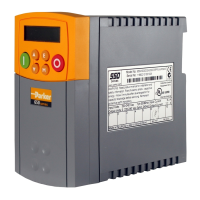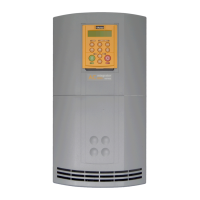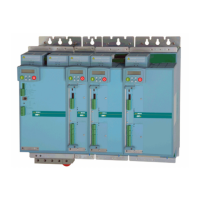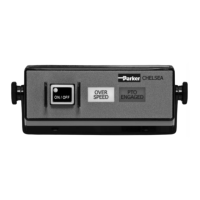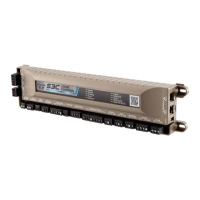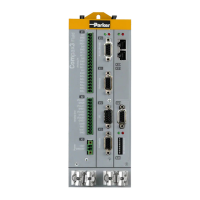4-4 Operating the Drive
650V AC Drive
Set-up using the Sensorless Vector Fluxing Mode
The drive must be tuned to the motor in use by matching the motor parameters in the drive to
those of the motor being controlled.
IMPORTANT: You
use the Autotune feature.
Enter values for the following parameters.
MAX SPEED Default is
Product Code
Set the speed in Hz at which the 650V will
run when the maximum setpoint is
MIN SPEED 0.0% Minimum speed clamp
ACCEL TIME 10.0 s The time taken for the 650V output
frequency to ramp up from zero to MAX
The time taken for the 650V output
frequency to ramp down from MAX
SPEED to zero
MOTOR CURRENT Default is
Product Code
Enter the motor nameplate full-load line
current
Product Code
Enter the output frequency from the motor
nameplate
Drive speed setpoint whilst jogging
Selects a type of "ramp to standstill", for
when RUN signal is removed
HEAVY/NORMAL
0 Selects between Heavy or Normal mode
VEC (1)
This parameter contains the main method
of motor control used by the drive, and
by default is set to VOLTS/HZ
Enter the motor nameplate full-load rated
speed. This is the motor speed in rpm at
base frequency minus full load slip
MOTOR POLES 4-pole Enter the number of motor poles shown
Product Code
Enter the motor nameplate voltage at
base frequency
Selects the Autotune operating mode.
Enables the Autotune feature
The Autotune Feature
IMPORTANT: You
carry out an Autotune if you intend to use the drive in Sensorless Vector
Fluxing Mode. If you are using it in Volts/Hz control an Autotune is not necessary.
The Autotune feature identifies motor characteristics to allow the drive to control the motor.
It loads the values into the parameters below.
MAG CURRENT Magnetising current. Not measured by
Stationary Autotune
STATOR RES Per phase stator resistance
LEAKAGE INDUC Per phase stator leakage inductance
MUTUAL INDUC Per phase mutual inductance
ROTOR TIME
CONST
Rotor time constant. This is identified from
magnetising current and motor nameplate rpm
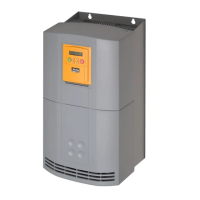
